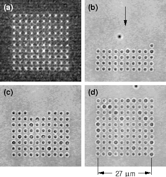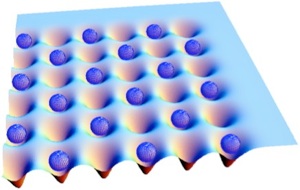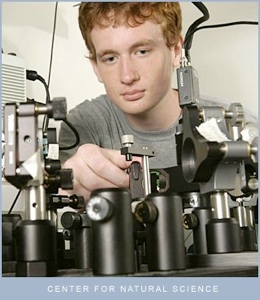Current work significantly extends the capabilities of laser tweezing, making it possible to sculpt light into modes and patterns that provide important new functionality. For example, we can now controllably adjust the orientation of trapped matter - a core capability for the sort of "lock and key" assembly required by some biological (and micro-machine) systems.
We also use novel light modes and patterns to create optical "bottles" for cold atoms, laser "guiding" of matter, reconfigurable optical "sieves" for separation of bio-molecules, along with one-, two-, and three-dimensional optical "lattices" which allow for a variety of basic studies. To do all of this, we pass laser beams through computer-generated holograms (of our own design), thereby forming a tailored potential energy landscape which causes micro- or nanoparticles to assemble themselves into a desired structure. Thus, in the end, we produce holograms that are not merely ethereal images; they have corporeal substance.
Our work also aims to enhance the extent of nanoparticle localization (i.e., reducing trap volumes) and of control over large-scale organization of micro- and nanocomponents. On the nano-scale, we envision a variety of single-molecule studies, as well as highly selective size- and shape-dependent optical sorting of chemical nanoprobes. On the microscale, interest in organizing components into larger structures or assemblies stems from many quarters, including the desire to organize biological cells during organ and tissue growth, the desire to create photonic bandgap materials and devices, and the desire to create model thermodynamic systems for the study and elucidation of collective phenomena/many-body effects in tailored potential landscapes and even of biological assembly processes.









